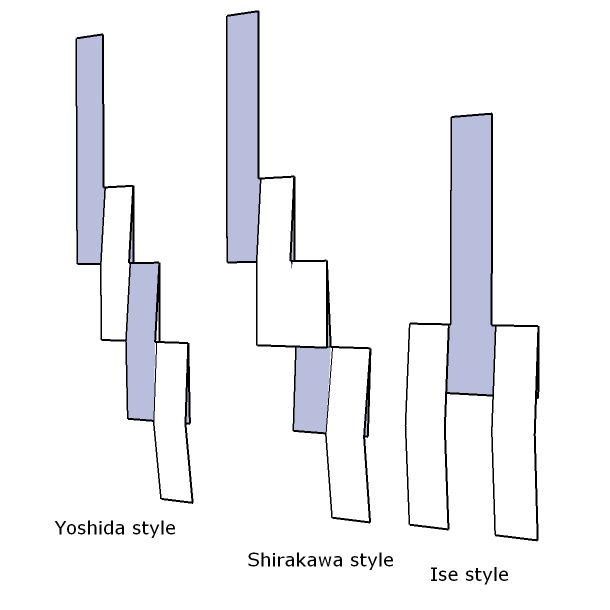Shide (Shinto) on:
[Wikipedia]
[Google]
[Amazon]

 are
are

 are
are zigzag
A zigzag is a pattern made up of small corners at variable angles, though constant within the zigzag, tracing a path between two parallel lines; it can be described as both jagged and fairly regular.
In geometry, this pattern is described as a ...
-shaped paper
Paper is a thin sheet material produced by mechanically or chemically processing cellulose fibres derived from wood, rags, grasses or other vegetable sources in water, draining the water through fine mesh leaving the fibre evenly distributed ...
streamers, often seen attached to or , and used in Shinto
Shinto () is a religion from Japan. Classified as an East Asian religion by scholars of religion, its practitioners often regard it as Japan's indigenous religion and as a nature religion. Scholars sometimes call its practitioners ''Shintois ...
rituals in Japan
Japan ( ja, 日本, or , and formally , ''Nihonkoku'') is an island country in East Asia. It is situated in the northwest Pacific Ocean, and is bordered on the west by the Sea of Japan, while extending from the Sea of Okhotsk in the north ...
. A popular ritual is using a , or "lightning wand", named for the zig-zag paper that adorns the wand. A similar wand, used by for purification and blessing, is the with two . A Shinto priest waves the over a person, item, or newly bought property, such as a building or a car. The wand is waved at a slow and rhythmic pace, but with a little force so that the strips make a rustling noise on each pass of the wand. For new properties, a similar ritual known as is performed with a , an enclosed part of the land (enclosed by ), and sake
Sake, also spelled saké ( ; also referred to as Japanese rice wine), is an alcoholic beverage of Japanese origin made by fermenting rice that has been polished to remove the bran. Despite the name ''Japanese rice wine'', sake, and indee ...
, or ritually purified sake known as .
The has been used for centuries in Shinto ceremonies and has similarities in Ainu culture. In Ainu culture, a shaved willow branch called an or closely resembles the Shinto , and is used in similar blessing rituals.
References
External links
* Origami Shinto in Japan Shinto religious objects Exorcism in Shinto {{Shinto-stub